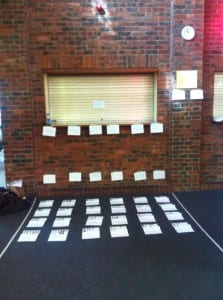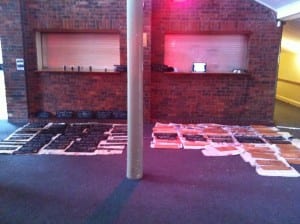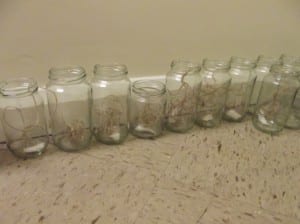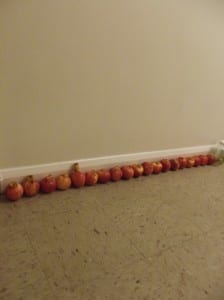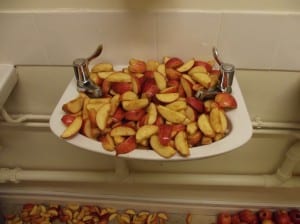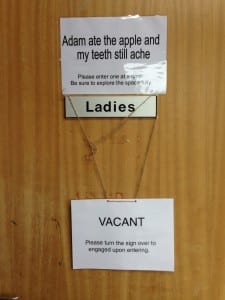Site Specific Performance is a term used to describe theatre that is related to a certain location. In that aspect to the word “perform’ what does the actor feel when performing in a place not familiar. The challenges approaching The Grandstand Project were something that, as students of theatre, would find difficult. When Michael asked the group about what we thought of The Grandstand our reactions were one of a simultaneous blank stares and wide eyes topped with small shrugs of “I don’t know”. This in itself was the first problem we encountered as a class. How can our finished and polished pieces of work bring relevance to a site that, no harm intended, was a place that Lincoln has seemed to forgotten about? Of course now looking back on this original mindset I must have been in a pessimistic state of mind but at the time the real challenge was to inject life into this empty shell of a building that seemed to have fallen from grace. Another issue was the lack of knowledge of the history of the site. With no resources at first we seemed to have been thrown into the deep, but only our eagerness and hunger to delve into with this project. Of course this situation was nothing that a little digging couldn’t fix however. I think once I got over the self imposed idea that I was going to struggle with working in this site I was actually able to really understand The Grandstand. With the seminars we were given by Michael we explored more realms of performance within a site, from idea like “drifting”, mythgeography and live art. I was extremely interested and coveted by the idea of live art, as the process of developing it seemed innovative and seemed to fit in with the site real well. As someone who is obsessed with performance art in any sense it just seemed to relate to me. By these seminars taking place I was able to go off on a tangent of ideas and thoughts that I could use for both of the pieces I was in. For the EXPO’69 performance it was the main principles to make sure the audience have fun and notice the space, and to also bring life into the site. For the Tragedy at Highfeild Avenue group we made it our goal to remember the 3 children that had died in a fatal accident at the street of the same name, and we played on the fact The Grandstand originally had plans to be a mortuary a very cautious issue that we had to handle with care and sensitivity as they were real. I aim to show the ideas and developments of both the Tragedy at Highfeild Avenue as well as the EXPO’69 pieces and try to express the concepts, those we used and those that were supposed to be underlying in the general message of our performances and the relation to them both of the site of The Grandstand. On the first visit to the site we were told to keep a open mind and to let ourselves explore. My first reactions were one of a mixed response. I greatly was interested in the fact it looked very disused and run down from the outside. I also realised just how alone the building was from the rest of Lincoln. Initial thoughts were to make something celebrating the fact it is so alone and as I phrased it “dead”. I didn’t know how to bring these dark, macabre elements into a building like this however.
The first visit for me was more of me trying to get a feel of the atmosphere of the space, and I feel like these dark ideas were stemming from the dark clouds and bad weather as well as the rusted fence near it. Still with no concrete idea for a performance the next few days of drafting up some creative thinking came to no fruition. It seems that I was trying to think of something to stage there without really understanding The Grandstand. We were placed into groups of 4’s. I was with Katherine, Adam and Kent and we asked to explore a allotted space and use our bodies in a way to highlight this area. Very similar to the works of Willi Dorner who used brightly clothed people and filled spaces. We used our bodies to hang from the back of the fencing and in the process we put our arms around the back of the cold steel to form shapes like crucifixes and such. The following task was to then actually actually put this piece of work into a main room of the site. We then proceeded to go to the back room with steel pillars, and draped our arms around these imposing structures within the room. The fireplace was a main focal point for our planning. In the week’s seminar we were asked to look into the aspect of “drifting”. Our piece was to actually now incorporate the rules given to us in The Handbook Of Drifting. One rule I was particularly interested in was “picking a theme” and sticking to it. In our piece we looked for sharp angles, then pausing to reflect on the room, and then proceeding to let our body do the work. We didn’t think about the routine to stick to we just decided on a route to go to and then went down said route. It was actually a really interesting exercise to do, as I felt that it made me more connected to the actual site. Another rule I liked was ‘don’t be satisfied with irony – insist on double inauthenticity (Smith, 2010 p.120) This spoke to me purely because it says to not conform to what is comfortable to you in a performance aspect. To merely be satisfied with how you think rationally and not to think outside the box on a project this big is foolish, in my own opinion. By having a degree of inautenticity however was it fair to argue that by using this rule we deceive our audience? Producing a fake piece of art in a sense? In that sense as well what would be the point in producing a work of performance devoid of any substance and relevance. It was a brief passing thought then made me think about how little I actually knew about The Grandstand itself. Of course after doing the performance I hadn’t actually realised what I did. It took me until yesterday to truly feel like I had build the foundation to make a connect with the site building itself. A very vague thought I understand, but in a piece where you don’t speak and only allow yourself to walk and think you do gets you to think and react.I also, upon first gaze have completely became enamoured with this stunning fireplace in the room we did our performance. “Per Ardua Ad Astra”, a rough translation apparently is “through adversity to the stars” which is the RAF’s motto is written over the main fireplace, and upon further questioning Michael informed us of the RAF past that the Grandstand actually had. I thought I was excited when I found out a morgue was planned to be build at the Grandstand but the military past it has is outstanding .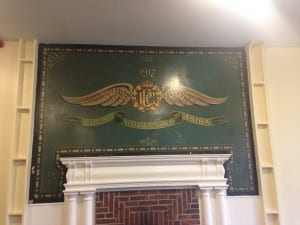
The week after the drifting exercise we went to the Lincoln Archives, as a class, to learn more about the history of the site. We were given a range of things relating to The Grandstand. After browsing through a few articles I found one particular piece of paper really caught my eye. This document entailed about a event called the Lincolnshire EXPO held in 1969. Me, Samantha and Sam immediately became keen on collaborating to make a installation piece. The event was held to celebrate local business and entrepreneurs in their respected field of work. The festival had musical acts such as Dennis Wooden Trio and Edmundo Ros. For some offbeat reason as soon as I saw Edmundo Ros’ portrait and managed to find his music online I strangely became fixated on him. The fact that a Trinadian vocalist, along with his Latin American orchestra, performed at such a local event was quite obscure to me, for instance why was no local talent drafted into the setlist? However perhaps having someone of international success playing their most recent hit “Hair” from their album “Hair Goes Latin” released by Decca records could be a good enough draw to the show. My obsession with this man may have been a little, as blatant as it was, harrowing however the music he is said to have played that I listened to on the album was just enthralling. Perhaps the dull, slow beats produced hypnotised me into some kind of trance but I knew I was hooked. It also arose that The Grandstand was actually not a huge part of these celebrations and a degree of sadness took over me. The site we had must have felt like a outsider, someone who watched everyone else have fun from across the field, and to me that is heart wrenching.
Another article that made me think was a newspaper article about a bomb that killed a schoolgirl on her way home. The reason this made me think was due to the proposed plans for the Grandstand to be a mortuary. If this had taken place then her body would have been brought her before being laid to rest. Some ideas began to circulate now in my head about how to bring the carnival and festivities to a place which is being placed and named by people, including me, a dead and quiet area. I felt that instead of dwell on how dark and macabre the place is we actually insert some life and space into it. As for the idea of Margaret myself, Ashleigh and Poppy wanted to commemorate her and pay our respects to a young life cut short. In our want to research more about the tragic story of Margaret we set a time to revisit the archives to further our research on this little girl. In regards to finding about one death of a schoolgirl we went into the achieves feeling skeptical, for instance we still had to make the strong link to The Grandstand and at the fact we still had no idea about who this girl was.. We arrived and was given access to a folder in which we crowded around. Whilst flicking through the various pieces of paper and old new’s articles preserved in the filing one article just spilled every detail we needed to do this. Entitled “Tragedy at Highfield Avenue” it told of an event that occurred on the 11th June 1943 at 25 Highfield Avenue at approximately 5pm. It told of the death of 12 year old Margaret Elaine Marriott after the Lancaster MK III bomber, Code UGS, No.Ed 833 of the 1654 heavy construction unit tipped it’s wing on a telegraph pole on the street and crashed and blew into flames whilst it was on a training flight exercise practicing three engined flight over Lincoln. It hit 22 – 24 Highfield Avenue but caused further damage on the aforementioned road and Dixon Street. Her parent’s were working at their allotment at the time of the accident. We also found about Anthony Thacker and Laurence Thacker, 2 boys who also perished in the accident. If that wasn’t specific enough the article also went on to give us further information involving Margaret. She attended South Park high school, and was reportedly popular with her classmates as the article says her classmates were visibly upset she had died. She was also buried at St. Helen’s Churchyard here in Lincoln, written on her grave was “Theres a friend for little children”. Given this new information we had obtained it was safe to say our creative cogs were turning. This girl now had a name, a address and wasn’t just some nameless enigma who we were clinging on to in hope of finding some relevant information. And in us looking out for her she brought along 2 other children for us to pay our respects too. After the visit, and with both the project now in development due to the research we obtained, I looked into the idea of installation art. Both of the pieces fall under a category of this branch in a sense as we are leaving something in the site for a length of time.After our visit to the archives we were able now to try to find the graves of the unfortunate victims of a accident. We then set about on making a film to use for our final performance detailing our journey to the street the children were at to the churchyard they are buried in and then The Grandstand made the journey to St Helen’s Churchyard. We started at Highfeild Avenue and found the houses the children lived in quickly.
The path we took was through a park, where a children’s playground sat quite near to the actual grave. We searched for a good length of time in the churchyard and managed to find the 3 graves of Anthony, Laurence and Margaret. We paid our respects to the site and departed quickly to not disturb the area.
After filming we not set up another meeting to discuss the plans of action needed to take place before the performance. We now find ourselves trying to counter the topic of relevance. Essentially we are working on a juxtaposition in a sense and the proposal for the Grandstand to be turned into a morgue during World War 2. So, hypothetically, if the plans did go through the bodies would have been taken here. In the 3 of us chronicling the journey to the Grandstand we want to keep the children’s memory alive, and pay our respects. Our idea’s have come to fruition by using Poppy as a “vessel” in a sense to channel Margaret, and me and Ashleigh as Laurence and Anthony respectively. We shall highlight around the body using tape, symbolising a typical crime scene. We aimed to incorporate flowers, and white sheets to show the area as a clean, clinical space. Along with this happening with that Tragedy At Highfeild Avenue group the EXPO group was now starting to come into fruition. We settled on making the space in the front foyer a carnival, or a party in a sense. The preliminary aspects we had to achieve were all last minute, so the food, decorations and other miscellaneous items we used were to be brought on the day. After the progress on both works I looked into the idea of installation art and found the book “Installation art: A Critical History” by Claire Bishop. In this was the quote “Installation art is a term that loosely refers to the type of art into which the viewers physically enters and is often described as theatrical, immersive or experimental”(p.6). From this I gathered that our audience could be a crutial part in both works. The Grandstand Project in my view did actually manage to bring forth a reasonable size audience, from students and lecturers. For the first hour I was greeting people into the EXPO’69 piece, offering them food, drink or even make them dance to the music being played. It was a fairly tame piece, as most of the actual performance was them entering the building, surveying the area and then leaving to watch the other performances. I saw the EXPO more as a live art piece, in which the audience was encouraged to look and take in the space but then leave. It was also quite interesting to see the Shoe group interact with the space as they walked through the foyer from outside, avoiding the people inside. It was quite hard to keep a fun atmosphere when not a lot of people came to the site, however those that did went to the laminated paper detailing our site piece, they may have also taken fancy to a cake slice or some elderflower and then proceed into the main room. I believe the main goal of the EXPO was achieved, as people seemed to enjoy the time they had there. The Tragedy at Highfield Avenue group piece was to last 2 hours. We had written down what times we were supposed to have and what was meant to happen at those times, making the piece ritualistic. As it was a long piece which was slow paced our audience numbers were a mixture of those who watched intently for minutes at a time and those who passed by on journeys to another piece. I was actually noticing that people come back and they notice the changes in scene, so for instance they would be watching me and Ashleigh tape around Poppy at first but then when they come back from watching other pieces they see a body on the ground wrapped in sheets and a taped body on the ground. I feel that from that perspective it would have been compelling to come back again to witness what else has happened upon the audiences absence. The only weaknesses I could have seen with this piece was the time we had to do everything in. We had to lose the open cupboard idea, and instead go with a idea given to us from Michael, by using a picture of his child on the cupboard to represent the fact how the Grandstand is also now used for a playgroup. We wanted the open door to symbolise the toys the kids use and perhaps a suggested space for our “vessels” the deceased kids to play with however we had to compromise as we were not allowed to open it. In Why performance it states how we are in a way ‘enabling the site to speak for itself’. we are challenging the juxtaposition of the now children’s centre and playing on the mortuary idea.
In conclusion I believe that the module has been good. Different, due to the thin veil of actor and audience and it has still left me questioning if I was acting during the performance. It’s peculiar for a actor to feel as tho he is not performing despite being part of a show. The void I feel is not due to me not having done a performance, it’s actually due to me not realising that I have just performed and thats a amazing, yet daunting, feeling for a actor to experience.
Works cited:
Phil Smith. (2010). The Handbook Of Drifiting. Mythogeography : A Guide To Walking Sideways. 118- 121.
Pearson, M. (2010) Site-Specific Performance. Palgrave Macmillan: London.
Claire Bishop (2005). Installation Art: A critical history. London: London Tate Publishing. 6-10.
Pearson, M. (2011) Why Performance? Available at: <http://www.landscape.ac.uk/landscape/impactfellowship/peforminggeographieswarplands/toolkit.aspx> [ 15 May 2014]
Davies, K (2014) Pictures taken at the Lincolnshire Archives.

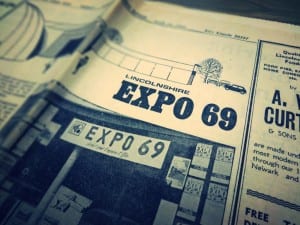
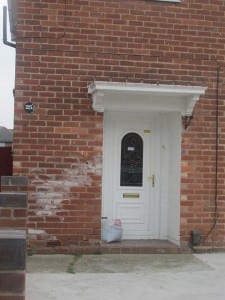
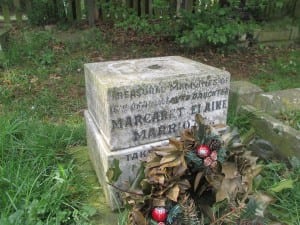
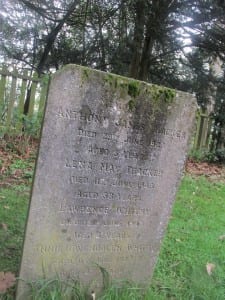
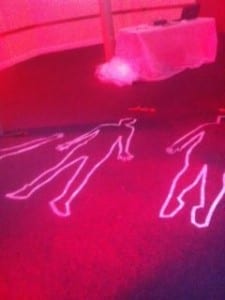
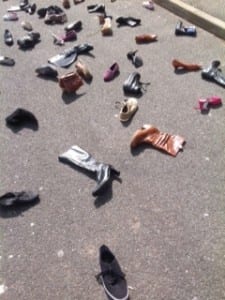
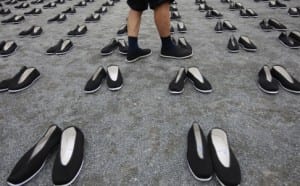
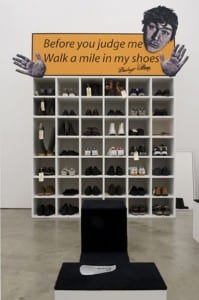
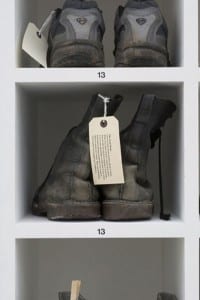
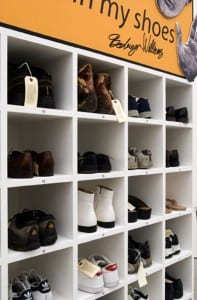
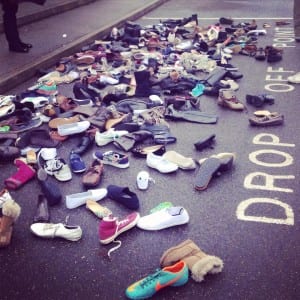
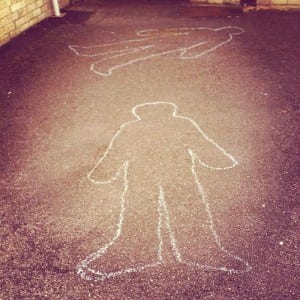
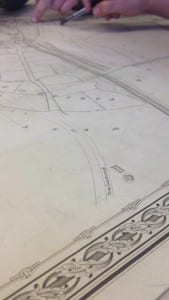
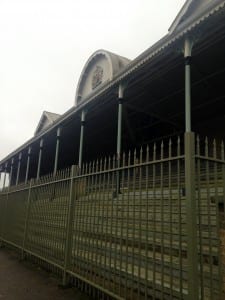
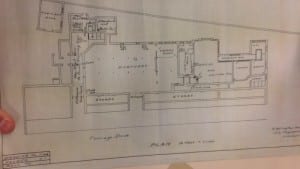

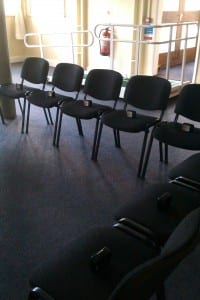
![Etiquette in Buenos Aires, photo Nicolas Goldberg [Available from http://www.rotozaza.co.uk/etiquette2.html]](https://sitespecific2014mpi.blogs.lincoln.ac.uk/files/2014/03/shapeimage_2-300x230.png)

![Milne, S. [image online] Available at https://sitespecific2014mpi.blogs.lincoln.ac.uk/2014/03/10/talking-sense/](https://sitespecific2014mpi.blogs.lincoln.ac.uk/files/2014/03/image-1-300x225.jpeg)
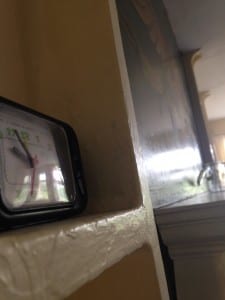
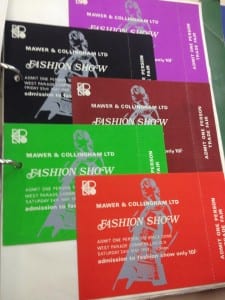
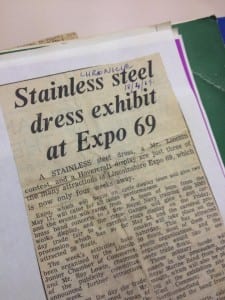
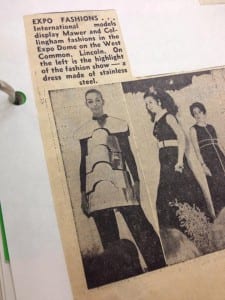



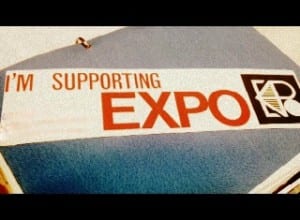
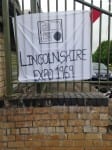
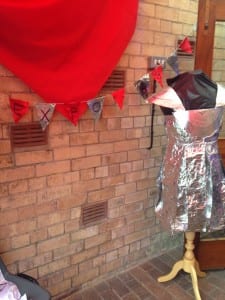
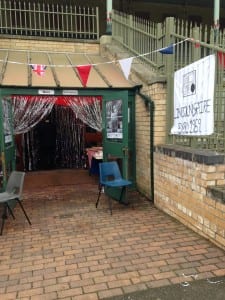
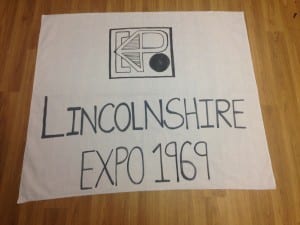
![20140207_091920[1]](https://sitespecific2014mpi.blogs.lincoln.ac.uk/files/2014/02/20140207_0919201-300x168.jpg)
![20140207_092405[1]](https://sitespecific2014mpi.blogs.lincoln.ac.uk/files/2014/02/20140207_0924051-e1392254373916-168x300.jpg)
